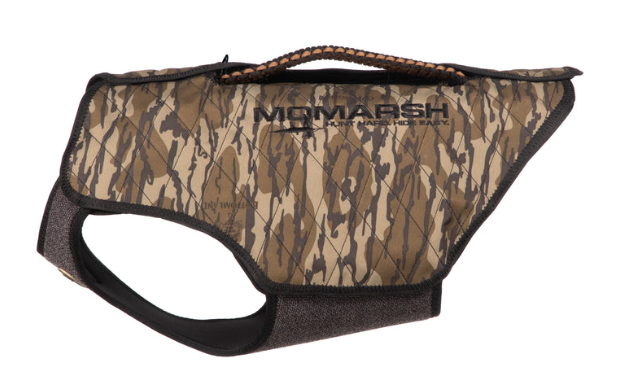Bill Gibson | Kennel Master, Mossy Oak GameKeeper Kennels
The Importance of a Steady Retriever
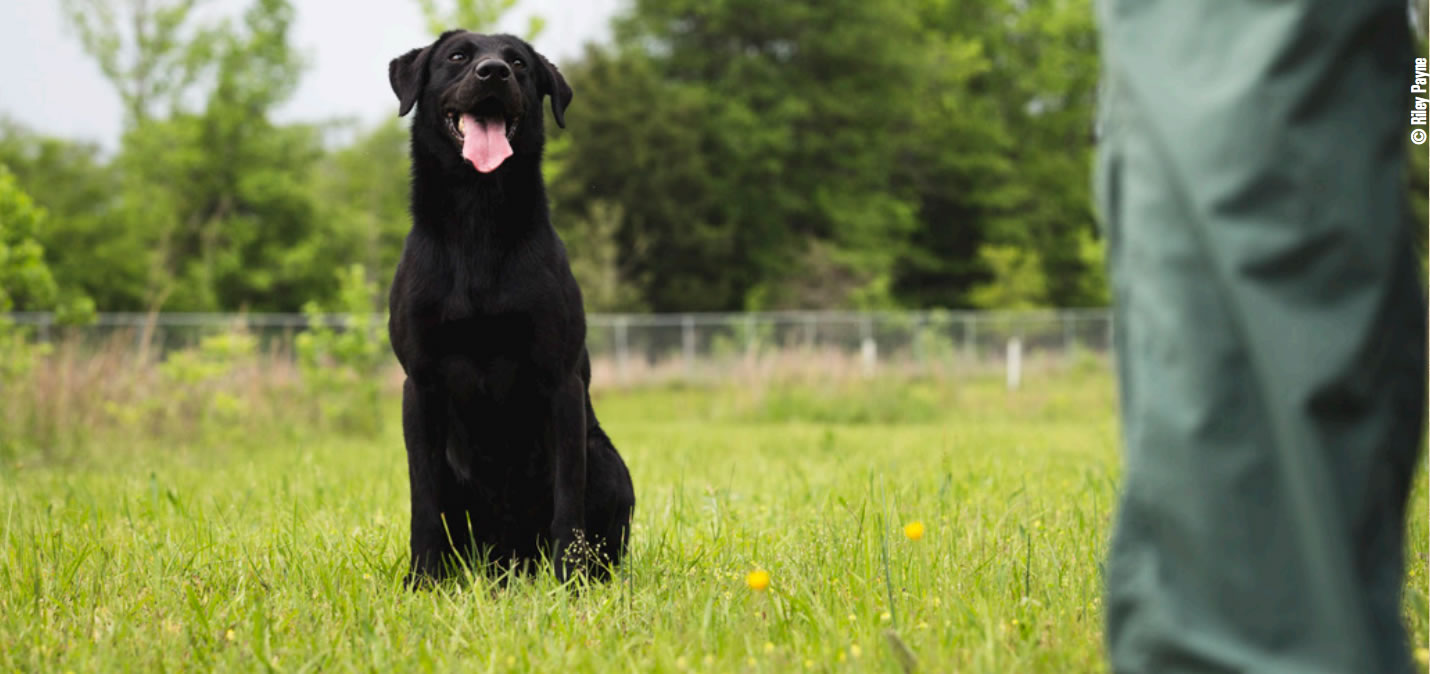
Two of the most important attributes of a started or finished dog in terms of safety and hunt quality are complete quietness in the duck blind and steadiness to and during flush, shot, and fall. There is nothing more annoying during a duck hunt than a dog that whines or barks when birds are working, or more dangerous than when a pup breaks on the sound of gunfire.
These undesirable qualities are normally the result of the trainer not spending ample time with the dog during the initial steadiness phase of training, and then elevated by not taking the time to properly transition the dog from training to hunting scenarios.
I have often read that a dog’s retrieving desire, referred to as “prey drive” will be suppressed if steadiness is emphasized before retrieving. I do not agree with this theory. Instead, I opine that when properly done, steadiness training has very minimal or no adverse affect on and will actually enhance “prey drive.” Why would steadiness training enhance “prey drive?” The answer is that the retrieve is the dog’s reward for steadiness and pups always want to get their reward.
Be advised and understand that steadiness is not achieved by a few quick lessons with the puppy at the beginning of obedience training and then forgotten; instead, it is a continuing process, the foundation of which is laid in early training and is reinforced as your pup progresses through all levels of training, including transition to hunting, and then throughout the dog’s hunting years. There is no one best method for training steadiness. All pups are different and progress through each and all phases of training in different time frames. Only after a dog finishes basic obedience is it time to move on to the formal retrieving phase of training, but obedience must still be reinforced at the start, during and at the end of each and every session.
How to Steady a Retriever
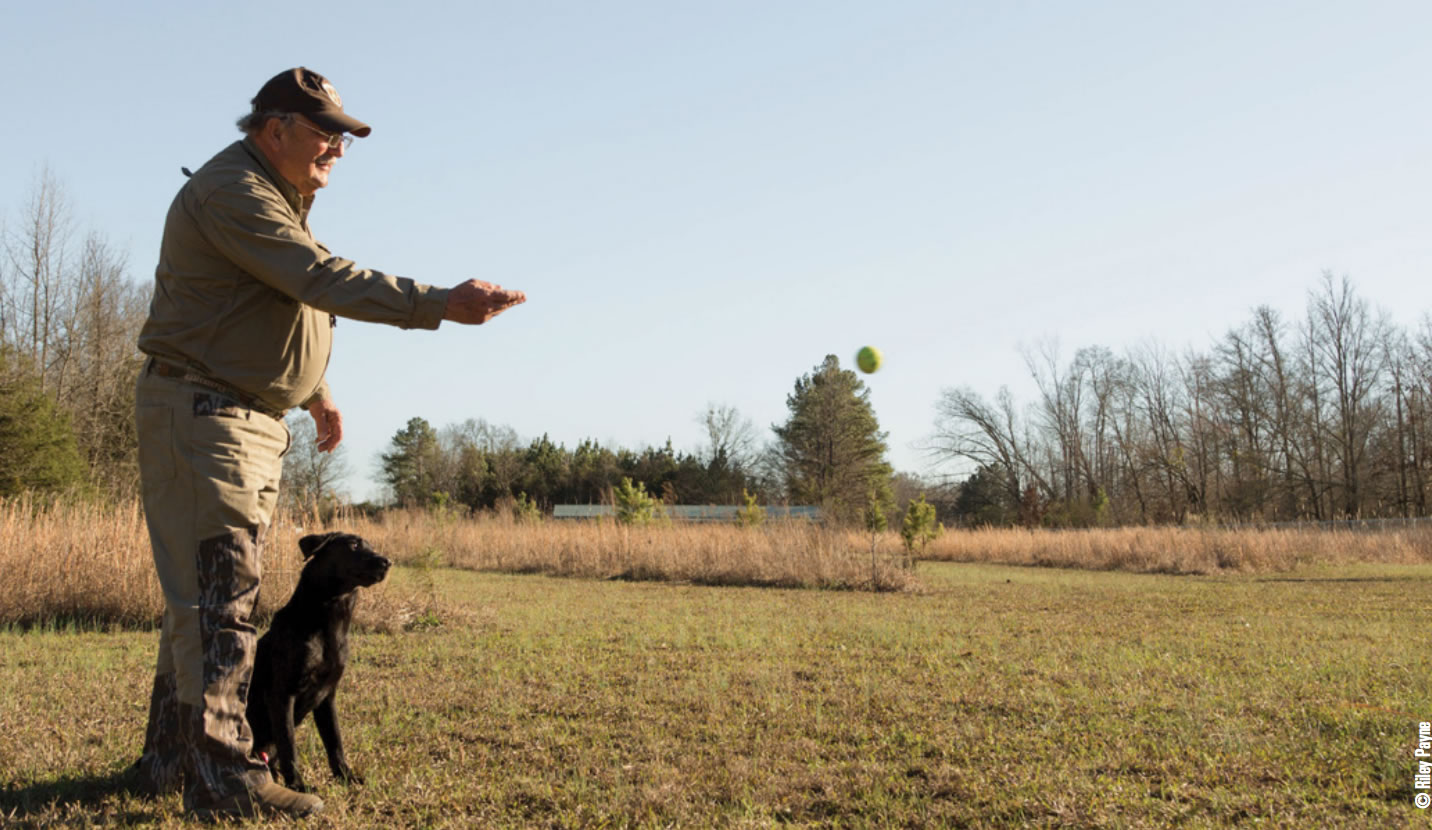
Assuming that your dog has been properly introduced to very basic single retrieves in a restricted area, understands the “sit,” “here,” “heel” and “stay” commands, you are now ready to move onto to steadiness training and very basic retriever training. At the start of and at random times during each retrieving session have the pup sit, throw the dummy a short distance, tell the dog to stay, and walk backwards to the dummy with your arm extended and your hand in the classic police stop position. Upon reaching the dummy and while keeping your eye on the dog, kneel down, pickup the dummy and then walk back to the dog with the dummy in hand. Why do this? Because this teaches the pup that every thrown dummy and later on that every shot bird is not for him/her to retrieve and reinforces the concept that steadiness reaps the reward - a retrieve.
If the pup remains steady, always give him or her a reward. After a few days of conducting your sessions in this manner, you can stand away from the dog, throw the dummy back toward the dog, approach, and again pick it up without any movement by the pup. As the training days progress the dummy should be thrown closer and closer to pup until it is thrown just inches in front of pups feet, then picked up by you, and the pup should not make any attempt to break and retrieve the dummy. Every time the pup remains absolutely steady, reward them with a retrieve.
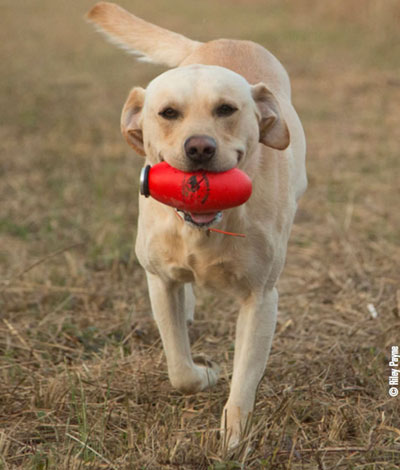
As your dog progresses to basic retriever training, during every training session they should be given a good mix of marks, trailing memories, circle memories, and unknowns, with delays on the send and diversions on the return. But at the end of each session, you should finish as you started with basic obedience drills intermixed with steadiness drills.
After the beginning of basic retrieving drill(s), if you start the retrieving sequence with a memory drill, end the session with a mark and vice versa, then finish the training day with obedience. You can use the pup’s name for the release command or any other word of your choosing. I prefer to use the pup’s name and a snap of the fingers on my casting hand for a release command. The duality of these commands prevents confusion should another dog on the line or hunt have the same name as your dog or a sound alike name or the same release command as yours.
Tips for Steadiness Training
- At the start of each session, as you work your dog at heel, occasionally throw a dummy and give the command “sit,” which is normally done at this stage using one blow of the whistle. After a few days, pup will sit when you stop walking without the whistle command. This will later pay dividends when training the dog to sit on the flush.
- To minimize the possibility of repetitive 30 or 40 yard dummy throws that will cause your dog to threshold, always vary the distance on marks and memories so that the dog does not build in a threshold distance, i.e. a distance that he or she is reluctant to go beyond on a retrieve.
- To train the dog to go through barriers, set up training scenarios that use barriers. A barrier can be a change of color in the grass, a change from a field to a wood line, a change from open water to flooded timber, a ditch, a trail, etc.
- To introduce your dog to gunfire, use a remote launcher at a distance of at least one hundred (100) yards on the first day and as long as the dog shows no adverse reaction, move closer each day until the dog is next to the gunfire. Initially, every time the launcher is fired, aim the launched bumper toward the pup so that pup gets a short retrieve and associates the retrieve with gunfire.
- Never shoot fireworks around the pup. Don’t take the pup to a gun range, or engage in hunting activities with many guns shooting until after the dog is properly introduced to gunfire in both training and hunting scenarios and, regardless of age, never take your dog to a fireworks show. No good can possibly come of this unless you consider gun shyness and a complete loss of steadiness as “good.”
- Don’t expect too much too soon out of your dog or attempt to push him beyond his or her capabilities during training or during a pup’s first few hunts. The temptation to show off their skills to your buddies is great, but must be avoided at all cost. When the desire to impress your hunting buddies begins nagging at you, remember that you should always train for success and never train for failure. The end result will be that both you and your dog will be the better for it.
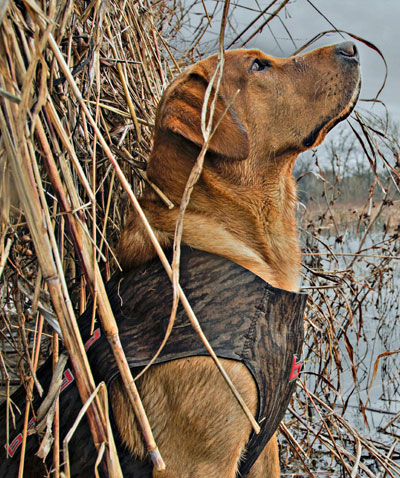 Labrador Teething Precautions
Labrador Teething Precautions
When pups are four to five months of age they will start losing both top and bottom baby teeth that are soon replaced with adult teeth. This natural occurrence is normally accompanied by sore, red, and bleeding gums. This can present a problem during training sessions. During this teething phase the pup will experience sore gums and will likely start refusing to pick the dummy or drop the dummy. Therefore, it is better to suspend the retrieves than run the risk of picking up the unwanted habit of refusing to pick the dummy or dropping the dummy on the way back. During early training sessions, a quick examination of the gums looking for redness and/or the appearance of blood on the dummy are both signals that a pup may be experiencing pain when picking up and carrying a dummy. If you notice they are reluctant to pick up and/or they drop the dummy, simply inspect the gums for redness and the dummy for blood. When these signs are present, stop the retrieves for a few days and then resume when their mouth is back to normal. In the interim you can continue working on obedience drills.
Steadiness and Transition to Hunting
To assist you in maintaining the high degree of steadiness attained during training, on the initial hunt the dog should be restrained by using a “tree lead” tied to the duck blind to prevent pup from breaking and the number of retrieves should be limited, because any shortcuts in steadiness training will most assuredly surface and become evident during this first hunt. The lead will prevent the unwanted consequences of a dog that constantly moves around in the blind, is noisy, or a dog that breaks on the shot and/or flush. Likewise, if engaged in hunting uplands, I do not recommend off-lead live bird walk-ups for a young dog because the excitement generated will most assuredly result in at least a breakdown, if not a total collapse, in a pup’s steadiness. Instead of taking a chance on your dog becoming unsteady, simply keep them on lead until you are absolutely certain he or she will not break.
These retriever steadiness training tips will help you develop your pup into a great hunting partner, one who’s quiet in the blind and dependably steady during flush, shot, and fall. Spending the extra time to develop these qualities as you train and transition the dog from training to hunting will pay big dividends on duck and upland bird hunts for years to come.
Mossy Oak's Product Suggestion: MOMarsh's VersaVest, a one-size-fits-most neoprene vest for waterfowl retrievers.

 Labrador Teething Precautions
Labrador Teething Precautions